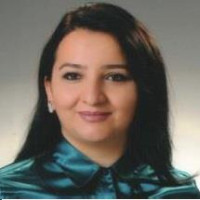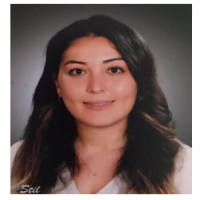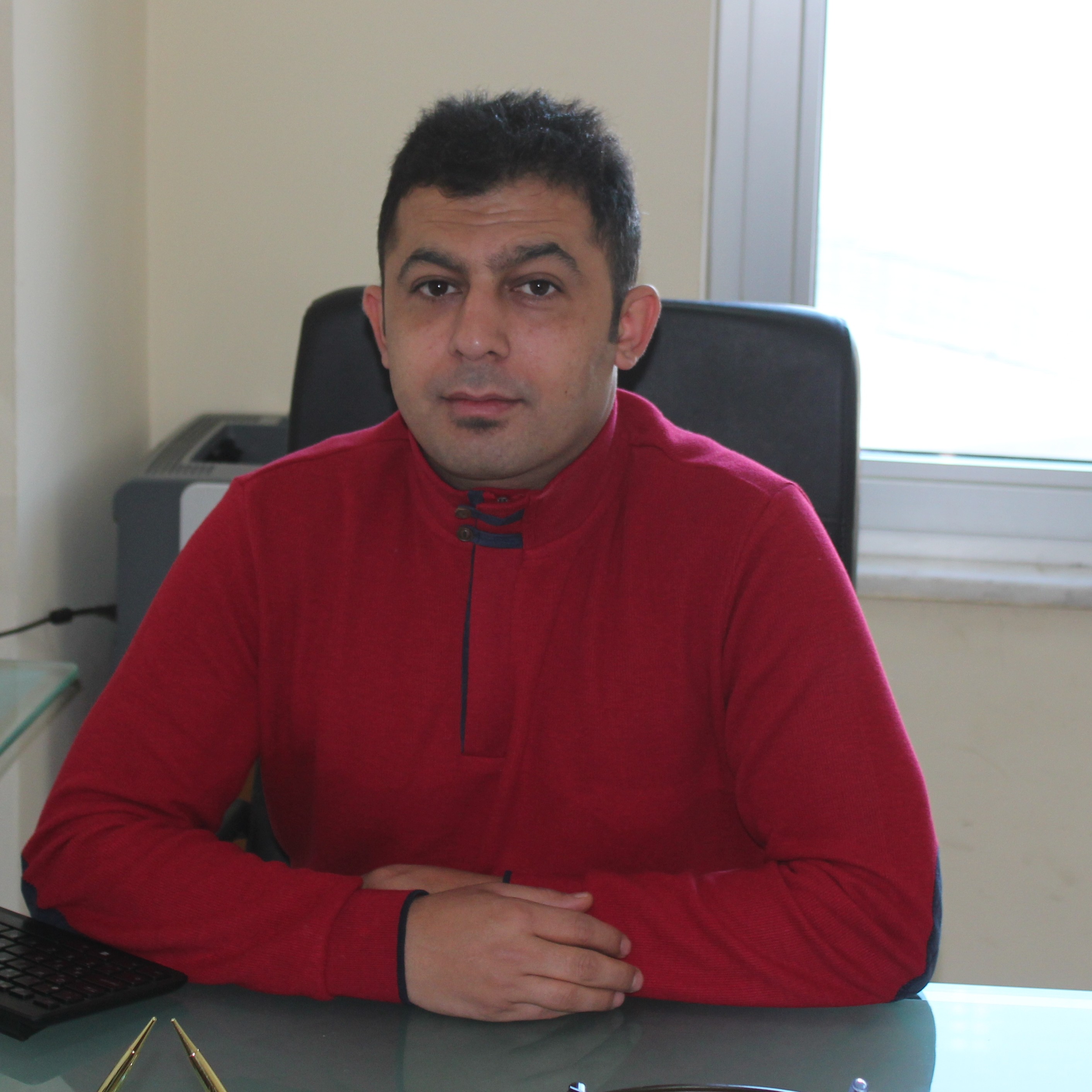Research Article
Issue Reviewers


 0000-0001-7673-7584
0000-0001-7673-7584
 0000-0002-8996-3393
0000-0002-8996-3393

 0000-0001-9281-4703
0000-0001-9281-4703

 0000-0002-1866-410X
0000-0002-1866-410X

 0000-0001-8963-850X
0000-0001-8963-850X



 0000-0001-7345-938X
0000-0001-7345-938X



 0000-0002-5365-5137
0000-0002-5365-5137


Aim & Scope
It is an accessible online journal. Selcuk Journal of Agriculture and Food Sciences aims to publish scientific research results from national and international priority areas that can be referenced in the future. It aims to publish articles in the fields of Horticulture, Plant Protection, Food Science and Technology, Agricultural Economics, Field Crops, Agricultural Structures and Irrigation, Agricultural Machinery, Soil Science, plant Nutrition, and Animal Husbandry. It is an independent, double-blind, peer-reviewed, open-access journal.
The journal aims to contribute to science by publishing high-quality publications of scientific importance. For this purpose, original research articles, reviews, case reports, and letters to the editor are published in all fields related to basic or extended field experiences in agricultural sciences.
Official abbreviation: Selcuk J Agr Food Sci
E-ISSN: 2458-8377
Full-Text Publication Language:
• Language: English
Content Written in English and Latin Alphabet:
• Article Title: English
• Author's Name: Turkish (in Latin Alphabet)
• Author's Address: English (Latin Alphabet)
• Keywords: English
• References: English (in Latin Alphabet)
Full Text: English (in Latin Alphabet)
Article Submissions
Submitted articles must be by the aim and scope of the journal. Manuscripts that are original, unpublished, and not in the process of evaluation in another journal, whose content and submission have been approved by each author, are accepted for evaluation.
Readership
The target audience includes professionals, experts, researchers, specialists, and doctoral students in all fields of agriculture and students related to this field. It aims to disseminate a culture of continuous professional development and research.
Publication Fee Policy
Selcuk Journal of Agriculture and Food Sciences is an open-access journal. All articles published in this journal are freely available online to anyone. There is no subscription or submission fee. The publication of articles in the journal and the execution of article processes are not subject to any fee. No processing or submission fees are charged for articles submitted to the journal or accepted for publication. Selcuk Journal of Agriculture and Food Sciences does not accept sponsorship or advertisement by its publication policies. All Selcuk Journal of Agriculture and Food Sciences expenses are covered by the Selcuk University Faculty of Agriculture.
Copyright
The Selcuk Journal of Agriculture and Food Sciences studies are owned by the authors who wrote them. The authors allow the intellectual work they sent to be published by the Selcuk Journal of Agriculture and Food Sciences under a Creative Commons Attribution-NonCommercial 4.0 International (CC BY-NC 4.0) license.
Originality of Articles
The Selcuk Journal of Agricultural and Food Sciences does not accept studies published elsewhere.
Author Guidelines
Manuscript preparation
Language: English
Manuscript types: Original research and reviews
However, we advise the authors to be concise in disseminating the work.
Manuscript format
Writing rules
1. Selcuk Journal of Agriculture and Food Sciences publishes original research and compilations in English on agriculture and food science.
2. If the original research articles are made from the master's and doctoral thesis, they should not be mentioned as a footnote on the article template.
3. The article submitted for publication is taken into consideration by the Journal Editorial Board by the publication principles. The Journal Editorial Board has the right to decide that articles unsuitable for the journal will be returned to the author(s) without being sent to the reviewers. In addition, articles that do not comply with the spelling rules or whose language of expression is inadequate will be returned to the author (s) for correction.
4. The evaluated article is approved by the journal's editorial board for preliminary evaluation. The editorial board can refuse the article if it violates the journal's publication rules. Articles that meet the basic requirements are sent to at least two referees who are experts in a particular discipline. A list of corrections/opinions of the articles passed through the peer review is submitted to the author. The corresponding author(s) should upload the corrected and revised article to the system within 30 days. Submissions after this time will not be accepted. Then, the board of editors decides (positive or negative) for the article's publication. Any correction or deletion of the articles accepted for publication doesn't make. The author (s) is responsible for the contents of the published articles.
5. The Editorial Board decides whether the manuscript is suitable for publication based on the reviewer's comments and the sufficiency of revisions made by the author/s.
6. Articles to be published should not have been previously published, and broadcast rights should not be given. In addition, the author (s) must comply with the international-national "Scientific Research and Publication Code of Ethics". The journal is not responsible for these issues.
7. Manuscripts should be submitted to the journal using the corresponding author's online submission system. All submissions should include the following documents.
8. After a manuscript has been accepted for publication, i.e., after referee-recommended revisions are complete, the author will not be permitted to change the manuscript, authors, and Author order.
9. The responsibilities of papers in the journal belong to the author/s.
Manuscript Template
https://dergipark.org.tr/tr/download/journal-file/28201
Image Format
Authors must use "Cover Letter" and "Template Paper" from the Journal web page.
In general, manuscripts submitted to the journal should be in the following order: Title, Abstract, Introduction, Materials and Methods, Results and Discussions, Conclusions, Acknowledgements (if needed), and References.
Cover Letter
https://dergipark.org.tr/tr/download/journal-file/28210
ORCID No: ORCID numbers should be written in the article template for each author in the article. Authors who do not have an ORCID number can obtain one by clicking the link: https://orcid.org/register
Title: The title of the manuscript should be short and illustrative.
Author's names and surnames should appear in complete form, not as short form. The corresponding author should be denoted by an asterisk mark. Address with e-mail of the corresponding author to whom all correspondence may be sent should be given.
Abstract: Abstracts should provide clear information about the research and the results obtained and should not exceed 300 words.
Highlights: Insert 2-4 highlights no longer than 85 characters.
Keywords: The author should provide a maximum of 6 keywords in alphabetical order, separated with semicolons, not included in the title. The scientific or systematic names of plants and fungi should be italicized. eg. Triticum aestivum; in vitro; in vivo.
Abbreviations / Symbols: Symbols are given by using a manuscript template. Define all symbols and abbreviations the first time they are used. Abbreviations cannot be used in the manuscript title. Symbols should be SI units.
Introduction: This section should explain the problem and previous studies, especially the most recent publications. The objectives of the study should be given in this section.
Materials and Methods: This section should explain all the materials and analytical and statistical methods and procedures.
Results and Discussions: The data and information should be presented using tables or figures in this section. The Editorial Board can decline the manuscript if unsuitable statistical analysis selection or incorrect statistical procedures are used. The findings should be discussed, but the author should be aware of unnecessary repetitions. Findings should be compared with other previous study literature, and reasons for similarities or differences should be defined.
Headings: Headings should be written in capital letters and bold. Subheadings should be written in lowercase letters; sub-subheadings should be written in lowercase letters and italics.
Acknowledgments: People, grants, and funds who contributed to the article should be stated in this section.
Author Contributions: A short paragraph specifying their individual contributions must be provided for research articles with several authors. The following statements should be used “Conceptualization, X.X. and Y.Y.; methodology, X.X.; software, X.X.; validation, X.X., Y.Y. and Z.Z.; formal analysis, X.X.; investigation, X.X.; resources, X.X.; data curation, X.X.; writing—original draft preparation, X.X.; writing—review and editing, X.X.; visualization, X.X.; supervision, X.X.; project administration, X.X.; funding acquisition, Y.Y. All authors have read and agreed to the published version of the manuscript.” Please turn to the CRediT taxonomy for the term explanation. Authorship must be limited to those who have contributed substantially to the work reported.
Funding: Please add: “This research received no external funding " or " This research was funded by NAME OF FUNDER, grant number XXX” and “The APC was funded by XXX”. Check carefully that the details are accurate and use the standard spelling of funding agency names at https://search.crossref.org/funding. Any errors may affect your future funding.
Data Availability Statement: This section provides details regarding where data supporting reported results can be found, including links to publicly archived datasets analyzed or generated during the study. Please refer to the suggested Data Availability Statements in the “SJAFS Research Data Policies” section at https://dergipark.org.tr/en/pub/selcukjafsci/policy . You might exclude this statement if the study did not report any data.
Acknowledgments: In this section, you can acknowledge any support not covered by the author's contribution or funding sections. This may include administrative and technical support or donations in kind (e.g., materials used for experiments).
Conflicts of Interest: Declare conflicts of interest or state, “The authors declare no conflict of interest.” Authors must identify and declare any personal circumstances or interests perceived as inappropriately influencing the representation or interpretation of reported research results. Any role of the funders in the study's design, in the collection, analysis, or interpretation of data, in the writing of the manuscript, or in the decision to publish the results must be declared in this section. If there is no role, please state “The funders had no role in the design of the study; in the collection, analyses, or interpretation of data; in the writing of the manuscript, or in the decision to publish the results”.
Tables and Figures: All illustrations, such as photographs, drawings, graphs, etc., must be labeled “Figure.” The number in order of mention in the text and table should be in text form, not shown as an image. It should be presented in table form. Tables and figures, including the caption, title, column heads, and footnotes, must not exceed 16 × 20 cm and should be no smaller than 8 cm in width. Author/s must not duplicate information that is already presented in the figures. Figures and tables should be in good resolution to get high-quality press. Photos contributing study results must have 600 dpi resolutions in 'jpg' format. Author/s must prefer the grey or black font instead of the color. No vertical lines are allowed in tables, which must be prepared using the "Paper Template". All tables and figures must be cited in the text. They must be numbered consecutively as they are referred to in the text. (Table 1 and Figure 1). Captions of tables and figures must have clear and concise descriptions. Captions of tables and figures, words through the tables or figures, and dip not of the tables or figures must be font sizes of 10, 9, and 8 Times New Roman, respectively. Horizontal and vertical lines must not be included in the figures. However, small letters can be used if statistical comparisons are made. If tables and figures have abbreviations, they should be described at the bottom of the tables and figures.
Units: SI (System International Units) must be used. For decimals, full stop or point must be used instead of commas (e.g., 1.25 instead of 1,25). In units, '/ ' must not be used, and there must be one free space between units (e.g., m s-1 must be used instead of m/s; J s-1 must be used instead of J/s; kg m s-2 must be used instead of kg m/s2). There must be one free space between the number and symbol (e.g., 4 kg N ha-1, 3 kg m-1 s-2, 20 N m, 1000 s-1, 100 kPa, 22 °C). There is a particular case for degree, minute, and second (°, ', and '') symbols. Those symbols must be used after the number (e.g., 10°, 45', 60"). The abbreviation of liter must be as 'L'. If the symbols are not at the end of the sentence, the full stop must not be used after the symbol.
References
Articles should be prepared according to the Selcuk Journal of Agriculture and Food Sciences citation system. In science, the Sel footnote or in-text system, whichever is widely used, can be preferred. The link must be given.
In the text, references should be cited by the author's surname and the year of publication, e.g. (Ceyhan 2003), (Ulker and Ceyhan 2008). If citations are made for author/s, only the year of the publication is placed through the brackets, e.g., Ceyhan (2003) or Ulker and Ceyhan (2008). For citations or references with three or more authors, “et al.” followed only the first author's surname [(Ceyhan et al. 2008) or Ceyhan et al. (2008)]. If there is more than one reference in the same year for the same author(s) then 'a, b' letters should be added in alphabetical order, e.g. (Ceyhan et al. 2008a). If there is more than one reference for the same author, a semi-colon is used after the year, e.g. (Ceyhan 2003; 2008; 2012). References cited within the text should be organized in the original language alphabetically (according to the initial author's surname) and in chronological order. The full name of the Journal, without abbreviation, should be written in italics. Abstracts published in proceedings are not cited in the text or in references. Author/s are fully responsible for incorrect citations in the text or references.
Journal articles:
Ceyhan E (2004). Effects of sowing dates on some yield components and yield of dry bean (Phaseolus vulgaris L.) cultivars. Turkish Journal of Field Crops 9: 87-95.
Ceyhan E, Harmankaya M, Avci MA (2008a). Effects of sowing dates and cultivars on protein and mineral contents of bean (Phaseolus vulgaris L.). Asian Journal of Chemistry 20: 5601-5613.
Ceyhan E, Avci MA, Karadas S (2008b). Line x tester analysis in pea (Pisum sativum L.): Identification of superior parents for seed yield and its components. African Journal of Biotechnology, 7: 2810-281. Doi:
Books:
Akçin A (1998). Yemeklik Tane Baklagiller. Selçuk Üniversitesi Ziraat Fakültesi Yayınları: 8, Ders Kitabı: 377, Konya.
Kempthorne O (1957). An Introduction to Genetic Statistics. Wiley and Sons, New York, USA. p.104.
Chapters in books:
Babaoğlu M, Yorgancılar M, Akbudak MA (2001). Doku kültürü: temel laboratuar teknikleri. (Editörler M. Babaoğlu, E. Gürel, S. Özcan), Bitki Biyoteknolojisi Cilt I Doku Kültürü ve Uygulamaları, S.Ü. Vakfı Yayınları, Konya, s. 1-35.
Eteve G (1985). Breeding for tolerance and winter hardiness in pea. In Hebblethwaite PD, Heath MC, Dawkins TCK (Eds), The pea Crop: A Basis for Improvement. Butterworths, London. UK, pp. 131-136.
Anonymous (Unknown Author/s):
TUİK (2012). Agricultural Statistics Summary. Turkish Statistical Institute, Publication No: 3877, Ankara. p.333.
From Internet:
FAO (2013). Production and trade statistics. http://www.fao.org/economic/ess/ess-trade/en/ (access date: 02.10.2013).
Thesis:
Ceyhan E (2003). Bezelye ebeveyn ve melezlerinde bazı tarımsal özelliklerin ve kalıtımlarının çoklu dizi analiz metoduyla belirlenmesi. Doktora Tezi, Selcuk Üniversitesi Fen Bilimleri Enstitüsü (Basılmamış), Konya.
Ceyhan E (2003). Determination of some agricultural characters and their heredity through line x tester method in pea parents and crosses. PhD Thesis, Selcuk University (Unpublished), Turkey.
Conference Proceedings:
Ceyhan E, Kahraman A, Karadaş S, Avcı MA, Önder M (2011). Yemeklik bezelye (Pisum sativum L.) genotiplerinin Konya ekolojik koşullarında bazı tarımsal özelliklerinin belirlenmesi. Türkiye IX. Tarla Bitkileri Kongresi, 12 – 15 Eylül, Bursa, Cilt II: s. 659-664.
Devos P (1988). Nutritional value of lentils and chickpeas and changes during processing. In: Proceedings of Lentils for Everyone Symposium, 29-30 September 1988; Marmaris, Muğla, Turkey, pp. 174-196.
References must appear in the text (including citations in tables and legends) and be listed individually at the end of the manuscript. We recommend preparing the references with a bibliography software package, such as EndNote, to avoid typing mistakes and duplicate references. Where available, include the digital object identifier (DOI) for all references.
Final Checklist
This list is hoped to be useful during the final check of the prepared article before it is uploaded to the journal system.
Submission Preparation Checklist
As part of the submission process, authors must check off their submission's compliance with all of the following items, and submissions may be returned to authors who do not adhere to these guidelines.
The submitted manuscript has not been previously published and has not been submitted to any journals for publication (detailed description in the author's guide).
The article file is in the form of a Microsoft Word (2003 or higher) document file.
The article preparation template was used. The article should be prepared as a double column.
All authors' information is on the cover page.
The abstract text does not exceed 300 words.
Up to 6 keywords written.
The length of the figures and tables is a maximum of 16x20 cm for a single-page layout and 8 cm for a double-column layout.
Images were chosen in 600 dpi "jpg" format and color images instead of gray or black
All tables and figures are numbered sequentially throughout the article
References are provided in the text according to the author's guidelines.
References are given in alphabetical order according to the author's descriptions
Units are given in the text according to the author's instructions.
All documents are prepared according to publication ethics rules.
Make sure the following items are available:
1. Author information added
• E-mail address
• Full postal address
• Phone number
• ORCID number
2. All necessary files have been uploaded.
• Manuscript text
3. The article was "spelled" and "grammarly checked".
4. All references cited in the bibliography are quoted in the text and vice versa.
Submit Manuscript
The account of the study's corresponding author should be used in the applications. All correspondence regarding the application is forwarded to the responsible author by e-mail through the journal system.
When uploading the article file, ensure that it does not contain any elements that would reveal the author's identity due to the double-blind peer-review process.
Files You Need to Upload Separately:
Manuscript Full Text
Manuscript Uploading
The manuscript must be uploaded online through the link given by the corresponding author using the Selcuk Journal of Agriculture and Food Sciences Manuscript Submission and Evaluation System. In the manuscript uploading part, the manuscript in pdf file format is uploaded in 'Application Upload'. In addition, the following files must be uploaded:
1. The manuscript in Word format (2003 or upper versions). Some descriptive information, such as author names, titles, addresses, and contact information (in Word format).
2. Word file having name-surname and institute and corresponding address of authors.
3. Ethics Committee Approval (if needed).
During the submission, the following commitment is received from the author in electronic form:
1. I am authorized/authorized by co-authors to submit this work to your journal.
2. The manuscript is original and has not been officially published in another peer-reviewed journal. It has not been evaluated by any other journal and does not infringe any existing copyright or other third-party rights.
3. I/we agree that if the manuscript is editorially accepted for publication, it will be licensed under a Creative Commons Attribution-NonCommercial 4.0 International (CC BY-NC 4.0) license.
4. Copyright and intellectual property rights of the author(s) or employer(s) of the author(s), if any, are reserved. The author(s) undertake(s) that the publisher is not responsible for any claims or lawsuits filed by third parties due to copyright infringement and that all responsibility belongs to them.
5. The author(s) undertake(s) that there is no criminal or illegal statement in the manuscript and that no unlawful materials and methods are used while conducting the research.
Author's Guide
Authors' Duties and Responsibilities
Authorship and Contribution
Authorship should be limited to those who have made significant contributions to the concept, design, execution, or interpretation of the work. All significant contributors must be listed as co-authors. If there are minor contributors to the work, such as language editing, these should be mentioned in the acknowledgments section. The corresponding author must ensure all co-authors have seen and approved the final manuscript and agree to submit it for publication. Authors are expected to carefully review the list and order of authors before submitting their manuscript and to provide the definitive list of authors at the time of original submission. The editor will only consider adding, deleting, or rearranging authors after submitting the manuscript in exceptional circumstances. All authors must agree to any such addition, removal, or re-editing. Authors take joint responsibility for the work.
Author Change Requests
Adding, deleting, or rearranging the names of authors in the list of authors can only be done before the article is accepted and only if approved by the journal Editor.
If such a change is requested, the Editor requests from the responsible author (a) the reason for the change in the list of authors and (b) written confirmation (e-mail) from all authors that they agree to add it. Only in exceptional circumstances will the editor consider adding, deleting or rearranging authors after the article has been accepted.
Manuscript Writing
Authors of original research manuscripts should address the topic authentically and with an objective discussion. The manuscript should contain sufficient detail and references to allow others to repeat the work. Fraudulent or knowingly false statements constitute unethical behavior and are unacceptable.
Originality
The author must ensure that the manuscript is original, has not been previously published elsewhere, and is not under consideration for publication elsewhere in another language.
Original Source Use and Citation
Authors should ensure that they are writing completely original works and that if they have used the work or words of others, it is appropriately cited. Privately obtained information, such as in conversations, correspondence, or discussions with third parties, should not be used without the express and written permission of the source.
Data Access and Retention
Authors may be required to provide research data supporting their articles for editorial review and/or comply with the journal's open data requirements. Authors should be prepared, where possible, to provide public access to such data and retain such data for a reasonable period after publication. Our journal recommends uploading research data to TÜBİTAK's Aperta Portal. Multi and Simultaneous Broadcasting: An author should not publish an article containing the same research in multiple journals. Submitting the same article to more than one journal simultaneously is unethical behavior. An author should not submit a previously published article for consideration in another journal unless it has been published as an abstract.
Publication of Studies Based on Survey and Interview
For research in all branches of science that requires ethics committee approval (ethics committee approval should be obtained. This approval should be stated and documented in the manuscript. In research requiring ethics committee permission, information about the permission (name of the committee, date, and number) can be found in the method section and on one of the first/last pages of the article. In the case of reports, information about signing the informed consent/consent form should be included in the manuscript.
Conflict of Interest
It will cause conflict in the person's work and may significantly impair her/his objectivity or any financial or other interest that could give an unfair advantage to any person or entity. All financial support resources and the role of sponsors in the study should be explained during the research and the preparation of the manuscript. If there is no source of funding, this should also be stated. Examples of potential conflicts of interest that must be disclosed include consultations, hiring, and grants. Potential conflicts of interest should be disclosed at the earliest possible stage.
Error Reporting
When an author notices a material error or inaccuracy in their published work, they should notify the journal immediately. The author also must cooperate in retracting or correcting the manuscript if the editor deems it necessary. If the editor or publisher learns from a third party that a published work contains errors, the author must cooperate with the editor, including notifying the editor.
Image Integrity
It is unacceptable to enhance, darken, move, remove, or add a certain feature in an image. Authors must comply with the journal's policy for graphic images.
Ethical Principles and Publication Policy
The Selcuk Journal of Agriculture and Food Sciences is a journal that is committed to science and publishing ethics.
Publication Ethics Principles
Publication Ethics can be defined as a self-regulation mechanism that insists on honesty on behalf of authors, reviewers, and publishers to establish higher standards of editorial handling. Ethical standards for publication exist to ensure high-quality scientific publications, public confidence in scientific findings, and people's opinions being respected.
• Honest researchers do not plagiarize.
• Does not cite sources incorrectly.
• They do not hide objections that they cannot refute.
• They do not distort opposing views.
• They do not destroy or hide data.
Peer-reviewed studies support and implement the scientific method. At this point, it is of great importance that all parties involved in the publication process (authors, readers, researchers, publisher, referees, and editors) comply with ethical principles.
Selcuk Journal of Agriculture and Food Sciences adheres to national and international research and publication ethics standards. It complies with Press Law, Intellectual and Artistic Works Law and Higher Education Institutions Scientific Research and Publication Ethics Directive Selcuk Journal of Agriculture and Food Sciences, Committee on Publication Ethics (COPE), Directory of Open Access Journals (DOAJ), Open Access Scholarly Publishers Association (OASPA) and World Association of Medical Editors (WAME) has adopted the International Ethical Publishing Principles published by It also undertakes to abide by the Decisions of the Türkiye Editors' Workshop.
• Press Law (National Legislation)
• Law on Intellectual and Artistic Works (National Legislation)
• Higher Education Institutions Scientific Research and Publication Ethics Directive (National Legislation)
• Transparency and Best Practice in Academic Publishing (International Criteria)
• Türkiye Editors' Workshop Decisions (National Criteria)
Simultaneous submission of the same work to more than one journal
Authors cannot submit the same article to more than one journal simultaneously. The editor reserves the right to consult the other editor(s) receiving the article if it learns of possible simultaneous submission. In addition, the editor may return the article without review or reject it without considering the reviews or take this decision by discussing it with the other relevant editor(s) and may decide not to accept article submissions from the authors for a certain period of time. It can also write to the author's employers or implement all of these measures together.
Plagiarism Prevention Control
To present the ideas, methods, data, practices, writings, figures or works of others as their own work, in whole or in part, without attribution in accordance with scientific rules.
Selcuk Journal of Agriculture and Food Sciences scans all submitted articles to prevent plagiarism. The studies submitted for review are checked for plagiarism using Ithenticate software. The similarity rate is expected to be less than 20%. The primary similarity measure is that the author complies with the citation and citation rules. Even though the similarity rate is 1%, plagiarism may still be in question if the citation and citation are not duly made. In this respect, citation and citation rules should be known and carefully applied by the author: Selcuk Journal of Agriculture and Food Sciences.
Plagiarism, duplication, false authorship/denied authorship, research/data fabrication, article slicing, slicing, copyright infringement, and concealment of conflict of interest are considered unethical behaviors. All articles that do not comply with accepted ethical standards are removed from the publication. This includes articles with possible irregularities and inconsistencies detected after publication.
Forgery
To produce data that is not based on research, to edit or change the presented or published work on the basis of unrealistic data, to report or publish them, to make research that has not been done appear as if it has been done.
To falsify research records and obtained data, to present methods, devices, and materials that are not used in the research as if they were used, not to evaluate data that are not suitable for the research hypothesis, to manipulate data and/or results in order to fit the relevant theory or assumptions, to falsify or shape.
Protection of Participants' Personal Data
Selcuk Journal of Agriculture and Food Sciences requires that all research involving personal or sensitive data or material relating to human participants that is not legally available to the public is subject to formal ethical review.
Handling Allegations of Research Abuse
Selcuk Journal of Agriculture and Food Sciences complies with COPE's Ethics Toolkit for a Successful Editorial. Selcuk Journal of Agriculture and Food Sciences editors will take action to prevent the publication of articles in which plagiarism, citation manipulation, data tampering, data fabrication, and other research misconduct occurred. In no event will the Selcuk Journal of Agriculture and Food Sciences editors knowingly allow such abuse to happen. Suppose the Selcuk Journal of Agriculture and Food Sciences editors are aware of any allegations of research misconduct related to an article published in their journal. In that case, they will follow COPE's guidelines regarding the allegations.
Ethical Violation Notices
When readers notice a significant error or inaccuracy in an article published in the Selcuk Journal of Agriculture and Food Sciences or have any complaints about editorial content (plagiarism, duplicate articles, etc.), they can e-mail sjafs@selcuk.edu.tr . You may notify us by sending an e-mail. We welcome applications as they will provide opportunities for us to develop, and we respond quickly and constructively.
Correction, Withdrawal, Expression of Concern
Editors may consider correcting if minor errors are detected in the published article that do not affect the findings, comments, and conclusions. Editors should consider retracting the article in case of significant errors/violations that invalidate the findings and conclusions. Suppose there is a possibility of misuse of research or publication by the authors. In that case, If there is evidence that the findings are unreliable and that the authors' institutions did not investigate the incident, or if the potential investigation seems unfair or inconclusive, editors should consider stating concern. The COPE and ICJME guidelines are considered concerning correction, withdrawal, or expression of concern.
Publication of Studies Based on Survey and Interview
Selcuk Journal of Agriculture and Food Sciences adopts the "Code of Conduct and Best Practice Guidelines for Journal Editors" and "Code of Conduct for Journal Publishers" of the Committee on Publication Ethics (COPE) to create ethical assurance in scientific periodicals. In this context, the following points should be followed in the studies submitted to the journal:
1. For research in all branches of science that requires ethics committee approval (ethics committee approval should be obtained; this approval should be stated and documented in the article).
2. In research requiring ethics committee permission, information about the permission (name of the committee, date, and number) is in the method section and on one of the first/last pages of the article. In case reports, information about signing the informed consent/consent form should be included in the article.
Special Issue Publishing Policy
A special issue can be published in our journal once a year upon the request of the Editorial Board. Articles sent for inclusion in a special issue are first subjected to editorial review. Then, it is examined in terms of compliance with the writing rules of the journal, and similarity is scanned to prevent plagiarism. After these stages, it is taken as long as the double-sided blanking model is used.
Editorial Confidentiality Obligation
Selcuk Journal of Agriculture and Food Sciences editors treat all submitted manuscripts as confidential documents; this means they will not disclose information about an article to anyone without the authors' permission. During the article review process, the following people can access the articles: Editors, Reviewers, and Editorial Board Members. The only situation in which details about a manuscript may be passed to a third party without the authors' consent is if the editor suspects serious research misconduct.
Allegations-Suspects of Scientific Misconduct
Scientific misconduct has different definitions. Selcuk Journal of Agriculture and Food Sciences addresses these issues case-by-case while following the guidelines established by major editorial ethics institutions. If the editor suspects an ethical or alleged violation, they are obliged to take action. This task covers both published and unpublished articles. The editor should not simply reject articles that raise concerns about potential abuse. Ethically, it is obliged to follow the alleged lawsuits. The editor should follow the COPE flowcharts where appropriate. Editors should first seek a response from anyone suspected of misconduct. If they are unsatisfied with the answer, they should ask the relevant employers or institutions to investigate. The editor should use all reasonable efforts to ensure that an appropriate investigation into the alleged misconduct is carried out; if this does not happen, the editor should make all reasonable attempts to persist in finding a solution to the problem. This is an arduous but essential task.
Selcuk Journal of Agriculture and Food Sciences complies with COPE's Ethics Toolkit for a Successful Editorial. Selcuk Journal of Agriculture and Food Sciences’ editors will take action to prevent the publication of articles in which plagiarism, citation manipulation, data tampering, data fabrication, and other research misconduct occurred. In no event will the Selcuk Journal of Agriculture and Food Sciences or its editors knowingly allow such abuse to occur. Suppose the Selcuk Journal of Agriculture and Food Sciences editors are aware of any allegations of research misconduct related to an article published in their journal. In that case, they will follow COPE's guidelines regarding the allegations.
Reviewers should notify the Editor when they suspect research or publication misconduct. The editor is responsible for carrying out the necessary actions by following the COPE recommendations.
Selcuk Journal of Agriculture and Food Sciences, COPE applies it to its flow charts when faced with misconduct allegations in the following or similar matters.
• What to do when rebroadcast is suspected
• What to do when plagiarism is suspected
• What to do when fabricated data is suspected
• What to do in requests for change of authorship
• What to do when an undisclosed conflict of interest is suspected
• What to do when unfair or gift authorship is suspected
• What to do when an ethical problem is suspected in an article
• Ethical violation, suspected email, etc. What to do when notified directly with
• What to do when a suspected ethical violation is announced via social media.
Complaint Procedure
This procedure applies to complaints about content, procedures, or policies that are the responsibility of the Selcuk Journal of Agriculture and Food Sciences or our editorial staff. Complaints can provide an opportunity and incentive for improvement, and we aim to respond quickly, courteously, and constructively.
The complaint must relate to the content, procedures, or policies that are the responsibility of the Selcuk Journal of Agriculture and Food Sciences or our editorial staff. Complaints should be emailed directly to the Selcuk Journal of Agriculture and Food Sciences and will be treated confidentially. The editor immediately responds to complaints. The editor follows the procedure regarding complaints outlined in the COPE flowchart.
Complaints are reviewed by the relevant member of the editorial team, and if they cannot be resolved, the following processes are followed:
• If this initial response is deemed inadequate, the complainant may request that their complaint be forwarded to a more senior journal member.
• Complaints can be forwarded to the editor-in-chief if the complainant is unsatisfied.
• A complete response will be given within two weeks if possible.
COPE publishes a code of practice for scientific journal editors. This will make resolving disputes with editors, journals, and publishers easier, but only after the journal's complaints procedures are exhausted.
Objection Process
We welcome severe objections from editors and reviewers to reviews. If you think we rejected your article because we misunderstood the scientific content, please send an objection message to our editorial team from sjafs@selcuk.edu.tr. Do not try to submit a revised version of your article at this stage. If, after reading your objection letter, we understand that your objection is justified, we may invite you to submit a revised version of your article. Thus, your work is sent back to the external referee process. Please include as much detail as possible in the appeal letter. Finally, we can only consider one objection per article, so please invest time and effort in writing the letter in detail to make your objection clear; you have a chance, so use it well. We have found that prolonged negotiation over rejected articles is often unsatisfactory for authors and editors, so we do not process multiple appeals for the same work.
Conflicts of Interest
A conflict of interest arises when professional judgment regarding a primary interest may be affected by a secondary interest (such as financial gain or personal competition). We believe that in order to make the best decision on how to handle an article, we need to know the authors' competing interests and that if we publish the article, the readers should know them, too.
Any financial or other interest that may conflict with one's work, significantly impair objectivity or provide an unfair advantage to any person or entity. All financial support resources and the role of sponsors in the study should be explained during the research and the preparation of the article. If there is no source of funding, this should also be stated. Examples of potential conflicts of interest that must be disclosed include consultations, hiring, and grants. Potential conflicts of interest should be disclosed at the earliest possible stage.
Selcuk Journal of Agriculture and Food Sciences has a set process for handling submissions from editors, employees, or editorial board members to ensure unbiased review. Such posts are primarily directed to other journals. If this is not possible, the post's owner will be suspended from the journal. These submissions are reviewed through a double-blind process.
The editor should not be involved in decisions about articles written by him or his family members. In addition, such work should be subject to all the journal's usual procedures. The editor should follow the ICMJE guidelines regarding disclosing potential conflicts of interest between authors and reviewers.
Principles of Research Ethics
Selcuk Journal of Agriculture and Food Sciences observes the highest standards in research ethics and adopts the international research ethics principles defined below. The authors are responsible for ensuring that the articles comply with the ethical rules.
• Integrity, quality, and transparency should be ensured in the design, review, and conduct of the research.
• The research team and participants, the purpose of the research, its methods, and possible uses should be fully informed about the necessities and risks of participating in the study.
• Confidentiality of information provided by research participants and confidentiality of respondents should be ensured. Research should be designed to preserve the autonomy and dignity of the participants.
• Research participants should take part in the research voluntarily and should not be under any coercion.
• Damage to the participants should be avoided. The research should be planned to minimize their risk.
• Be clear about research independence; If there is a conflict of interest, it should be stated.
• In experimental studies with human subjects, written informed consent must be obtained from participants who decide to participate. The consent of the legal guardian of children and custodians or those with a confirmed mental illness must be obtained.
• If the study is carried out in any institution or organization, approval must be obtained from that institution or organization.
• In studies with a human element, it should be stated in the “methods” section that “informed consent” was obtained from the participants and ethics committee approval was obtained from the institution where the study was conducted.
Author Contributions: A short paragraph specifying their contributions must be provided for research articles with several authors. The following statements should be used “Conceptualization, X.X. and Y.Y.; methodology, X.X.; software, X.X.; validation, X.X., Y.Y. and Z.Z.; formal analysis, X.X.; investigation, X.X.; resources, X.X.; data curation, X.X.; writing—original draft preparation, X.X.; writing—review and editing, X.X.; visualization, X.X.; supervision, X.X.; project administration, X.X.; funding acquisition, Y.Y. All authors have read and agreed to the published version of the manuscript.” Please turn to the CRediT taxonomy for the term explanation. Authorship must be limited to those who have contributed substantially to the work reported.
Funding: Please add: “This research received no external funding” or “This research was funded by NAME OF FUNDER, grant number XXX” and “The APC was funded by XXX”. Check carefully that the details are accurate and use the standard spelling of funding agency names at https://search.crossref.org/funding. Any errors may affect your future funding.
Data Availability Statement: This section details where data supporting reported results can be found, including links to publicly archived datasets analyzed or generated during the study. Please refer to the suggested Data Availability Statements in the “Selcuk Journal of Agriculture and Food Sciences Research Data Policies” section at https://dergipark.org.tr/en/pub/selcukjafsci/policy. You might exclude this statement if the study did not report any data.
Acknowledgments: In this section, you can acknowledge any support not covered by the author's contribution or funding sections. This may include administrative and technical support or donations in kind (e.g., materials used for experiments).
Conflicts of Interest: Declare conflicts of interest or state, “The authors declare no conflict of interest.” Authors must identify and declare any personal circumstances or interests perceived as inappropriately influencing the representation or interpretation of reported research results. Any role of the funders in the study's design, in the collection, analysis, or interpretation of data, in the writing of the manuscript, or in the decision to publish the results must be declared in this section. If there is no role, please state “The funders had no role in the design of the study; in the collection, analyses, or interpretation of data; in the writing of the manuscript, or in the decision to publish the results”.
wledgments: In this section, you can acknowledge any support not covered by the author's contribution or funding sections. This may include administrative and technical support or donations in kind (e.g., materials used for experiments).Conflicts of Interest: Declare conflicts of interest or state, %E2%80%9CThe authors declare no conflict of interest.%E2%80%9D Authors must identify and declare any personal circumstances or interests perceived as inappropriately influencing the representation or interpretation of reported research results. Any role of the funders in the study's design, in the collection, analysis, or interpretation of data, in the writing of the manuscript, or in the decision to publish the results must be declared in this section. If there is no role, please state %E2%80%9CThe funders had no role in the design of the study; in the collection, analyses, or interpretation of data; in the writing of the manuscript, or in the decision to publish the results%E2%80%9D.
Ethics declarations
Ethics approval: No approval from the research ethics committee was required to accomplish the goals of this study. However, the use of all the animals was with the consent of the participating farmers. Ethical approval for animals, patients, or participants was given by the Faculty of xxxxxxxxxx ethical committee (No:2023/xxx).
Publisher's note: Xxxxxxxxxx journal remains neutral about jurisdictional claims in published maps and institutional affiliations.
ORCID No: ORCID numbers should be written in the article template for each author in the article. Authors who do not have an ORCID number can obtain it by clicking the link https://orcid.org/register .
Price Policy
Selcuk Journal of Agriculture and Food Sciences is an open-access journal, no fee is charged for the journal. No fee is paid to the author for the published texts.
All financial and legal copyright transactions of translations are carried out by the translator. No financial support is provided to the translator for copyright fees and any other fees. The author is deemed to have accepted all financial, legal, and scientific responsibility from the date of submission of the translation to the Selcuk Journal of Agriculture and Food Sciences.
Selcuk Agricultural and Food Sciences is licensed under a Creative Commons Attribution-NonCommercial 4.0 International License (CC BY NC).

